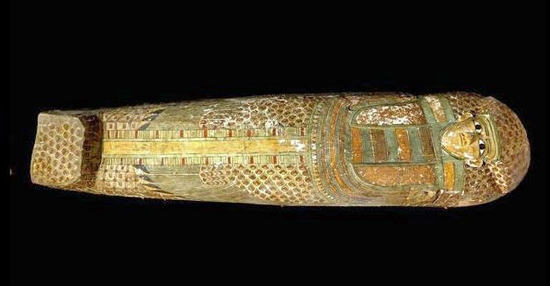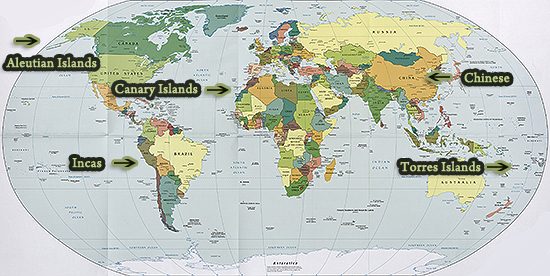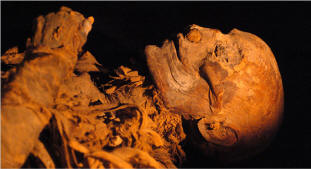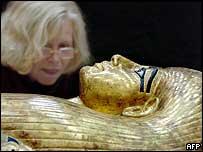|

MUMMY AT THE DENVER MUSEUM OF NATURE
& SCIENCE
Photo Paul Abramson
Mummies
What is a
Mummy?
A mummy is a dead body embalmed or otherwise preserved to protect it
from decomposition.
Why Would Anyone Do
That?
Dead bodies start smelling pretty fast.
Back in ancient days, burial rituals and celebrations, and their
preparations, could take
quite some time. Hence people mummified.
People also mummified for spiritual reasons
because they believed in an afterlife and wanted the body to
get there unspoiled and intact.

This wooden sarcophagus is
engraved with hieroglyphs and decorated with inscriptions of birds'
feathers. It is still bearing its original coloring and writings.
It was found completely with
its 3,600-year-old mummy, apparently belonging to a high official.
Unearthed in the ancient city of Luxor, southern Egypt, the
sarcophagus dates back to 1600 BC, when the 17th Dynasty reigned.
See also
 Governments of Egypt
Governments of Egypt
Supreme Council of Antiquities,
Egypt - February 10, 2014
How to Make a Mummy
There are different recipes to mummify artificially.
But regardless which method you prefer, to begin with, you always want to take out the
organs so they won't rot inside. Why is that?
The body may still look fresh right after death, but
the second someone dies the bacteria that were formerly
digesting food now start eating the organs themselves. So, always remove the organs before
you mummify away. The pros
pull the brains out through the nose, then on to the abdomen.
The removed organs go into jars. The
abdomen gets filled up with whatever is handy and fits the cavity,
and then it is sewn up.
Now you can go about
embalming for which you have at hand preferably resin. You also need linen bandages to wrap the whole thing up. Spices et cetera are
optional.
The Egyptians
covered the bodies for several weeks with natron before the
wrapping. Natron has an
anti-bacterial effect and absorbs water.
Another way to preserve dead bodies is by putting
them into a bath of vinegar (think pickles) or alcohol.
 Admiral Nelson's
body, for example, was transported in a barrel of brandy.
Admiral Nelson's
body, for example, was transported in a barrel of brandy.
Who Were the Mummy
Makers?
The Egyptians were professionals when it came to mummies, of course.
But the Incas mummified as well and so did the Chinese. More mummies
have been found on the Torres Islands, the Aleutian Islands, and the
Canary Islands.

Ancient Mummies
Found Across the Globe
Based on 2009 CIA World Map
Mummy Facts and Trivia
It's the year 740 AD and you don't feel so well. You go
down to the
pharmacist at the corner and, instead of Aspirin, he gives you Mummy.
That's right. Throughout the Middle Ages people sold ground mummies
to cure your troubles.

IS THIS QUEEN HATSHEPSUT?
People seem to believe it is. Read the
 New York Times article.
New York Times article.
Photo: Discovery Channel
By the way, the Egyptians mummified
animals as
well.
And
 these upright people here offer to mummify your pet, check it out.
these upright people here offer to mummify your pet, check it out.
And they do people too! Put $67,000 on the counter and aunt
Abby stays in your living room. Forever.

Tutankhamun (in front)
See more under
 Ancient
Egyptians.
Ancient
Egyptians.
More History
|